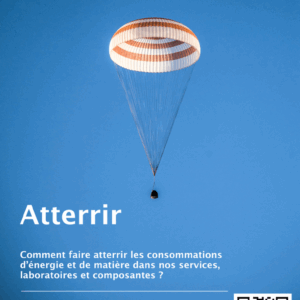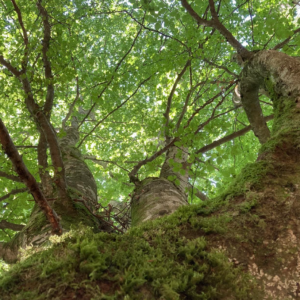Mardi 17/12 (Tuesday)
Salle de Réunion Fizeau, 5ième étage (Fizeau Building, denoted 4 in the joint map, Floor 5)
A partir de 10h30 Accueil des Participants/Café From 10:30 am Welcome of Participants/Coffee
11h00 : Introduction – Présentation du Projet DREAMS, Yves D’Angelo, LJAD.
Presentation of the DREAMS project: an interdisciplinary project
I shall first quickly present the biology of fungal networks: filamentous fungi, apexes, hyphae, thallus, mycelium, give many examples and insist on the multi-scale aspects. An essential diversion deals with combustion, flames, reactive flows, active fronts, which is also a multi-scale phenomenon. I will then draw a parallel between these two topics: random expanding (discrete) networks may yield active fronts. Finally, I will mention some possible other applications in industrial/energy networks, economy, human health, process bioengineering…
12h00 : Déjeuner/Lunch, sur place.
Salle de Réunion « Olivier Chesneau » 1er étage Bâtiment Fizeau (Fizeau Building, Floor 1)
14h00 -15h15 : A.M. Aziz-Alaoui ; Université du Havre (Séminaire IMSC du LJAD)
Complex Systems and Interaction Networks: Application to the Asymptotic Behavior of Networks of Reaction-Diffusion Systems in Neuroscience and Ecosystems
Neuroscience consists of the study of the nervous system and especially the brain. The neuron is an electrically excitable cell processing and transmitting information by electrical and chemical signaling, the latter via synapses, specialized connections with other cells. A. L. Hodgkin and A. Huxley proposed the first neuron model to explain the ionic mechanisms underlying the initiation and propagation of action potentials in the squid giant axon. Here, we are interested in the asymptotic behavior of complex networks of reaction-diffusion (PDE) systems of such neuron models. We show the existence of the global attractor and the identical synchronization for the network. We determine analytically, for a given network topology, the onset of such a synchronization. We then present numerical simulations and heuristic laws giving the minimum coupling strength necessary to obtain the synchronization, with respect to the number of nodes and the network topology.
15h15 – 16h00 : Claire Guerrier (LJAD Université Côte d’Azur)
Physiological modeling of a neuronal network: emergence of spontaneous rhythmic patterns in the pre-Bötzinger Complex. The pre-Bötzinger Complex located in the ventral medulla in the brainstem is involved in the non conscious inspiration, where a network of hundreds of neurons fire regularly in phase with the hypoglossal nerve. The neurons’ activity shows periodic patterns, with alternatively bursting and silent periods. Using a modeling approach and benchmarking of the model against experimental data, we predict that short-term plasticity may underlie a spontaneous rhythmic activity in this network, independently of the intrinsic neuronal properties.
16h Break 15 mn
Salle de Réunion « Olivier Chesneau » 1er étage Bâtiment Fizeau
16h15 – 17h00 : Laurent Monasse (LJAD Université Côte d’Azur)
Fisher/KPP models with memory for fungal growth and their numerical simulation Fungal networks can be modeled as branching processes in which the branching occurs both on the apexes and on the existing network. Starting from simple branching laws similar to Ricci Catellier & D’Angelo, a fluid PDE model can be formally derived. Further simplification of the models in the large diffusion limit gives a Fisher/KPP model with memory. We first study the qualitative behaviour of both the parabolic model and the fluid model, especially the selection of progressive fronts. We then use these results to design efficient and accurate numerical schemes for their resolution.
17h00 – 17h45 : Vincent Bansaye (École Polytechnique)
Branching processes and asymmetric cell division I will present models for cell division taking into account asymmetry at division and random transmission of a trait. I will show for two examples how spine techniques and the knowledge of branching processes in random environment allow to describe the profile of traits among the cell population. In particular, we are interested in the interplay of asymmetry and random transmission to capture the population with atypical traits. We will also link these issues to the description of bias in sampling and the analysis of PDE.
17h45 – 18h30 : Milica Tomasevic (École Polytechnique)
On a multi-type branching process modelling the development of a filamentous fungus In this talk, a multi-type branching process that models the growth of the network of filaments of a filamentous fungus will be presented. The network is seen as a population of individuals that may branch, grow or fragment according to prescribed rules depending on their type. We will analyse the repartition of filaments in length and size and derive a growthfragmentation PDE that it satisfies. The long-time behaviour of this PDE gives us insights about the order of magnitude of the population growth rate and as well of the rates with whom the different events happen in the network.
Repas le soir 20h ou 20h30 – Social Dinner
Restaurant à Nice (Les Sens https://www.les-sens-nice.fr/) 37 Rue Pastorelli 06100 Nice Tél: 09.81.06.57.00
Mercredi 18/12 (Wednesday)
Salle de Réunion «Olivier Chesneau» 1er étage Bâtiment Fizeau (Fizeau Building, Floor 1)
8h30 Accueil
9h00– 9h45 : Clara Ledoux/Eric Herbert (Université Paris-Diderot)
Characterization of the hyphal network growth dynamics in the filamentous fungus Podospora anserina
The success of filamentous fungi in colonizing their highly competitive habitats can be largely attributed to their ability to form a mycelium. This unique structure is an expanding interconnected network of branching hyphae. By an interdisciplinary approach, we characterize the network structure of the filamentous fungus Podospora anserina under controlled conditions using temporal series of pictures of this living network. The high-resolution camera allows for the analysis of both the whole mycelium and individual hyphae. The main features of the evolution of the hyphal network, such as the total length of the mycelium, the number of connections, the number of apexes, and the intra-thallus surfaces can then be precisely quantified.
9h45– 10h30 : Guillermo Vidal Diez De Ulzurrun (IMB, Academia Sinica, Taipei)
Mathematical approaches to study the fungal network
Aiming to understand the complexity of the fungal network and the processes shaping it, we have developed a threedimensional spatially explicit model that is able to simulate the interactions between fungi and different environmental stimuli. In addition, we created innovative image analysis tools to extract data from images of growing fungi that will serve to calibrate mathematical models and study fungal phenotypes in detail.
10h30 : Break 15 mn
10h45 – 11h30 : Louis Chevalier (Institut Jacques Monod)
The Mechanobiology of cell wall growth in filamentous fungi
The growth of walled cells, like bacteria, fungi and plants is limited by the expansion of the cell wall, a thin and stiff sugarmade layer encasing the plasma membrane. How cell wall mechanics adapts to rapid expansion is not known, in part because of the lack of imaging methods to monitor cell wall dynamics in live growing cells. Using the genetically tractable model Aspergillus nidulans, we implemented a sub-resolution imaging method to map cell wall thickness with nanometric resolution around live growing hyphae. Those data highlight specific patterns with thinner and softer cell walls at sites of tip growth and serve to decipher how single hyphae growth rates are linked to wall mechanics.
11h30 -12h15 : Patrick Perré (CentraleSupélec, Université Paris Saclay)
Joint work with Huan DU, Institute for Advanced Study, Shenzhen University, China
A lattice-based model of fungal growth
Fungi are among the most destructive agents of wood and wood-based products, resulting in the decrease of the building service life by breaking down lumber structures. This work presents a discrete lattice-based model to simulate mycelial growth, which explicitly incorporates tip extension, extension angle, anastomosis, and branching. The developed algorithm eliminates geometrical restriction of the lattice directions. Thus, it can generate realistic mycelial networks with low computational costs. Different growth conditions are reproduced via tropisms, which influence the tip dominant direction, such as thigmotropism that enables hyphae to bend around obstacles in structurally heterogeneous media. The validation of this model is implemented through an experiment focusing on the morphology and growth of Postia placenta, a species of brown rot fungi. Some model parameters are directly obtained from the experimental data, while others must be determined by inverse procedure. Finally, the presentation will focus on differences between 2D and 3D simulations, as well as the possibility to obtain the macroscopic behavior using relevant sets of continuous equations.
12h15 Déjeuner/Lunch
14h00 – 14h45 : Catherine Villard (Institut Pierre Gilles de Gennes)
Hyphae growth and branching under shear flow and confinement
The fungus Candida albicans is a commensal organism of the human mucosal surfaces that under specific conditions, such as immune deficiency, can invade through the epithelium and into the bloodstream, causing major failures of internal organs. We aim to better understand and characterize this invasiveness using microfluidic techniques leading to a control of the microenvironment. We will in particular focus on the biophysics of C. albicans filaments (hyphae) under conditions of shear flow and confinement.
14h45 – 15h30 : Marc Durand (MSC, Université Paris-Diderot)
Transport network of giant unicellular organism Physarum Polycephalum: interplay between flows & contractile activity.
In its vegetative phase, P. Polycephalum is made of thousands of undifferentiated cells fusing in a single, multinuclear cell, which can reach macroscopic sizes. This organism then develops a tubular network in which oscillatory flows are generated by the contraction of the membranous layer surrounding the “veins”. From a physicist’s perspective, the plasmodium can be seen as an active gel that is able, at short times, to generate and adapt contractile waves along the veins to generate peristaltic flows, and at long times to control actively its sol-gel transition to modify the network architecture. During this talk, I will show our first experimental results on flows and growth of P. Polycephalum transport network, and the interplay with its contractile activity. I will also show how spatial confinement affects these different quantities.
15h30 : Coffee Break/Discussions
Vers 17h00 – Fin du WorkShop – End of the WorkShop
Les joies de la contrainte ?
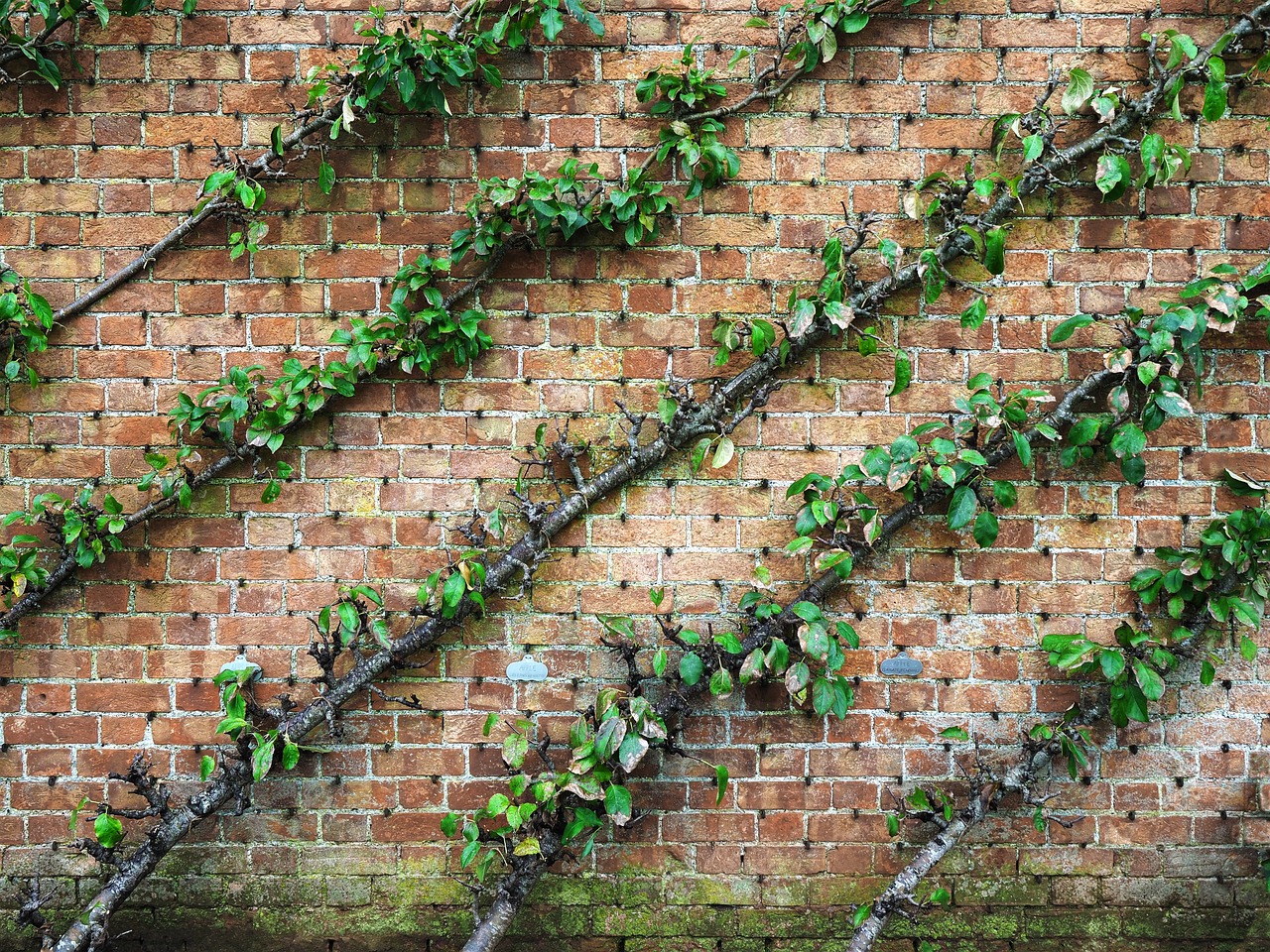
Organisateur
-
Petros Chatzimpiros
-
Email
petros.chatzimpiros@u-paris.fr
Lieu
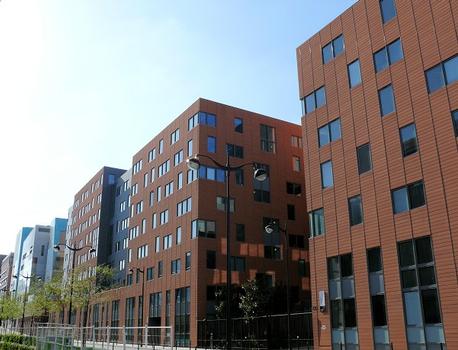
- Salle Luc Valentin, Condorcet
Prochaine occurence
- Aller à la Page
-
Date
- 28 Jan 2020
-
Heure
- 14h00 - 17h00
Nous organisons nos vies dans une illusion d’infinitude des ressources, largement bâtie sur l’exploitation d’énergies fossiles. Quant à eux, les écosystèmes naturels ont fait preuve de durabilité à l’échelle des milliards d’années car ils fonctionnent sous contrainte de finitude des ressources et de flux d’énergie photosynthétique. Si l’on peut espérer qu’une humanité durable puisse exister, ne devrait-on pas aussi faire l’éloge des contraintes qui sont en grande partie dures et que nous ne décidons pas ? Ce séminaire vise à illustrer la manière dont les contraintes physiques et biophysiques pilotent le couplage entre matières et énergie dans le monde et caractériser des possibilités socio-psychiques ou imaginées pour un monde durable.
14h00 Christophe GOUPIL (Physicien, LIED, Université de Paris Diderot)
Titre : Contrainte et relâchement de contrainte : Les joies de la Thermodynamique
Les principes de la thermodynamique s’imposent à tous les systèmes, le vivant ne faisant pas exception. Les contraintes qui en découlent définissent les bordures d’un cadre à l’intérieur duquel se développent les possibles. Subir les principes de la thermodynamique, les assimiler, en utilisant des voies parfois subtiles ou parfois grossières, telles sont les défis auxquels est confronté l’ingénieur, tout autant que la nature dans l’évolution du vivant. Les différentes modalités de couplage entre l’énergie et la matière permettent d’explorer l’espace des possibles. A la vision mécaniste idéalisée d’un monde sans frottement, se substitue alors celle de la thermodynamique où qui peut le plus ne peut pas nécessairement le moins, et où l’idéal n’existe pas dans un temps fini. Cette approche thermodynamique nous permet d’envisager d’autres regards dès lors que l’on considère ses extensions sociotechniques, qui elles aussi trouvent un cadre et des bornes. L’exposé en présentera quelques exemples en évitant l’écueil des métaphores superficielles.
14h30 Roland LEHOUCQ (Astrophysicien, LCEG, CEA)
Titre : Ecofictions vues par les contraintes
Résumé : La science-fiction semble être une littérature de la démesure. Mais, en cherchant à dépasser les contraintes du réel elle les explicite aussi. Elle imagine lesconséquences de leur oubli et permet, par exemple, de redécouvrir l’enjeu et les conditions de l’habitabilité terrestre. Ses déplacements dans le temps et dans l’espace sont riches d’expériences et d’ouvertures inspirantes qui pourraient aider à réfléchir sur les manières collectives de prendre en charge les défis environnementaux.
15h30 Sophie de MIJOLLA-MELLOR (Psychanalyste et philosophe,
Laboratoire de Psychanalyse, CRPMS, Université de Paris Diderot)
Titre : Quête de satisfaction et défis civilisationnels
Face au déni de la part d’une majorité de la société quant aux défis civilisationnels qui nous entourent se pose la question des forces psychiques qui animent individus et sociétés au point de les rendre aveugles face aux limites des capacités de la Nature et donc des conséquences de la course au profit. On sait que les pulsions sexuelles et agressives qui nous habitent doivent être contenues et en partie refoulées pour permettre la vie en société. Peut-on considérer les impasses civilisationnelles actuelles comme le signe d’un échec du refoulement nécessaire ? Quelle part pourrait tenir la culture comme possibilité de dériver les buts pulsionnels sans pour autant perdre leur intensité ? Et plus généralement, peut-on se fonder sur les mécanismes individuels pour imaginer une régulation sociale permettant d’échapper aussi bien à la restriction et au refoulement qu’à la déliaison pulsionnelle avec ses conséquences ?
16h Débat final. Animatrices : Florence Leclerc (Biologiste, LIED) et Sabina Issehnane (Economiste, LIED)
Matériaux pour l’énergie et géopolitique

Organisateur
-
Petros Chatzimpiros
-
Email
petros.chatzimpiros@u-paris.fr
Lieu

- Salle Luc Valentin, Condorcet
Prochaine occurence
- Aller à la Page
-
Date
- 24 Fév 2020
-
Heure
- 14h00 - 17h00
Résumé
Avec la transition énergétique, la géopolitique de l’énergie change dans sa géographie mais pas dans son principe. La question centrale, à savoir qui possède les ressources, ne fait que se déplacer des stocks fossiles aux matériaux miniers nécessaires à la mise en œuvre des moyens de captation et de stockage d’énergies renouvelables. Ce séminaire portera sur l’organisation de la course aux minerais et l’émergence des territoires-acteurs de la géopolitique minière.
Intervenants
1 ère partie : Isabelle Duhamel-Achin (Géologue, BRGM)
2 éme partie : Florian Vidal (Politiste, IFRI et LIED, Université Paris Diderot)
3 éme partie : Sébastien Velut (Géographe, Institut des Hautes Etudes de l’Amérique Latine, Sorbonne Nouvelle)
Débat final : Animé par Cécilia Bobée (Géographe, LIED) et José Halloy (Physicien, LIED)
Nos sœurs les plantes, repenser les parentèles.
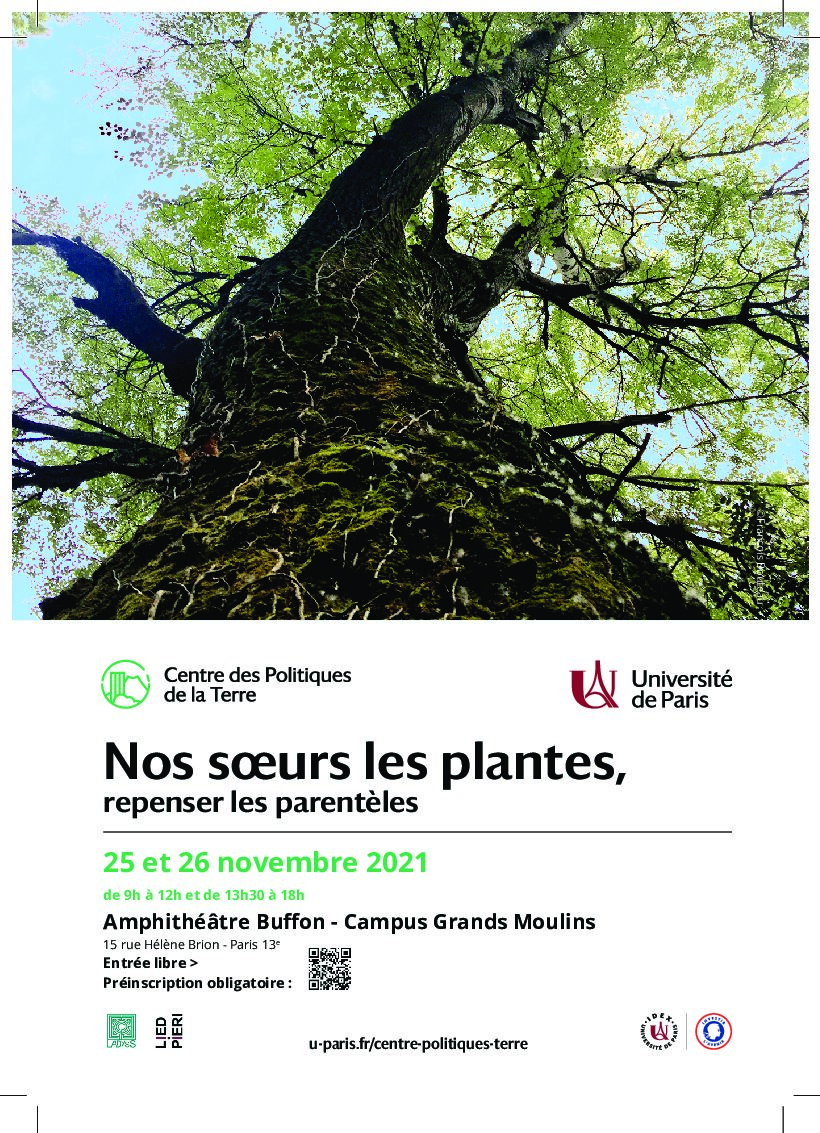
Organisateur
-
Centre des politiques de la Terre
-
Site Web
https://u-paris.fr/centre-politiques-terre/
Autres organisateurs
-
François Bouteau
-
Email
francois.bouteau@u-paris.fr
Lieu
- Amphi Buffon
- 15 Rue Hélène Brion, 75013 Paris
Prochaine occurence
- Aller à la Page
-
Date
- 25 Nov 2021
-
Heure
- 9h00 - 17h00
Au premier abord, penser le vivant en termes de fraternité ou de sororité semble plus relever de modes de pensée animistes que d’une froide rationalité scientifique moderne. Pourtant, la taxonomie classique séparant les vivants en deux règnes distincts : l’animal (anima qui bouge) et le végétal (immobile) subsiste encore malgré la révolution darwinienne qui inscrit le vivant dans un processus historique unique. En effet, les espèces actuelles proviennent d’espèces ancestrales, tant et si bien qu’en remontant le fil des générations, toutes les espèces actuelles présentent un degré d’apparentement plus ou moins profond.
Pourquoi reste-t-il difficile, dans un contexte scientifique moderne, de s’extraire de la vision aristotélicienne et génésiaque du monde qui place l’homme en haut de la pyramide du vivant ? Ce colloque a pour objectif d’associer le développement des récentes découvertes autour du végétal, de présenter les parcours évolutifs communs entre l’animal et le végétal ainsi que de comprendre les freins socioculturels qui empêchent l’intégration du vivant comme une parentèle. Il s’agit de dépasser les frontières construites entre ces “règnes” par la culture et les sciences modernes pour mieux penser et aider à trouver les formes de cohabitations adéquates entre humains et autres qu’humains, au temps de la multiplicité des crises écologiques majeures. Lors de la deuxième journée du colloque, nous nous attacherons à trouver des formes de transmission scientifique, éducative et artistique afin de dépasser ces frontières.
Les sociétés au défi du vivant
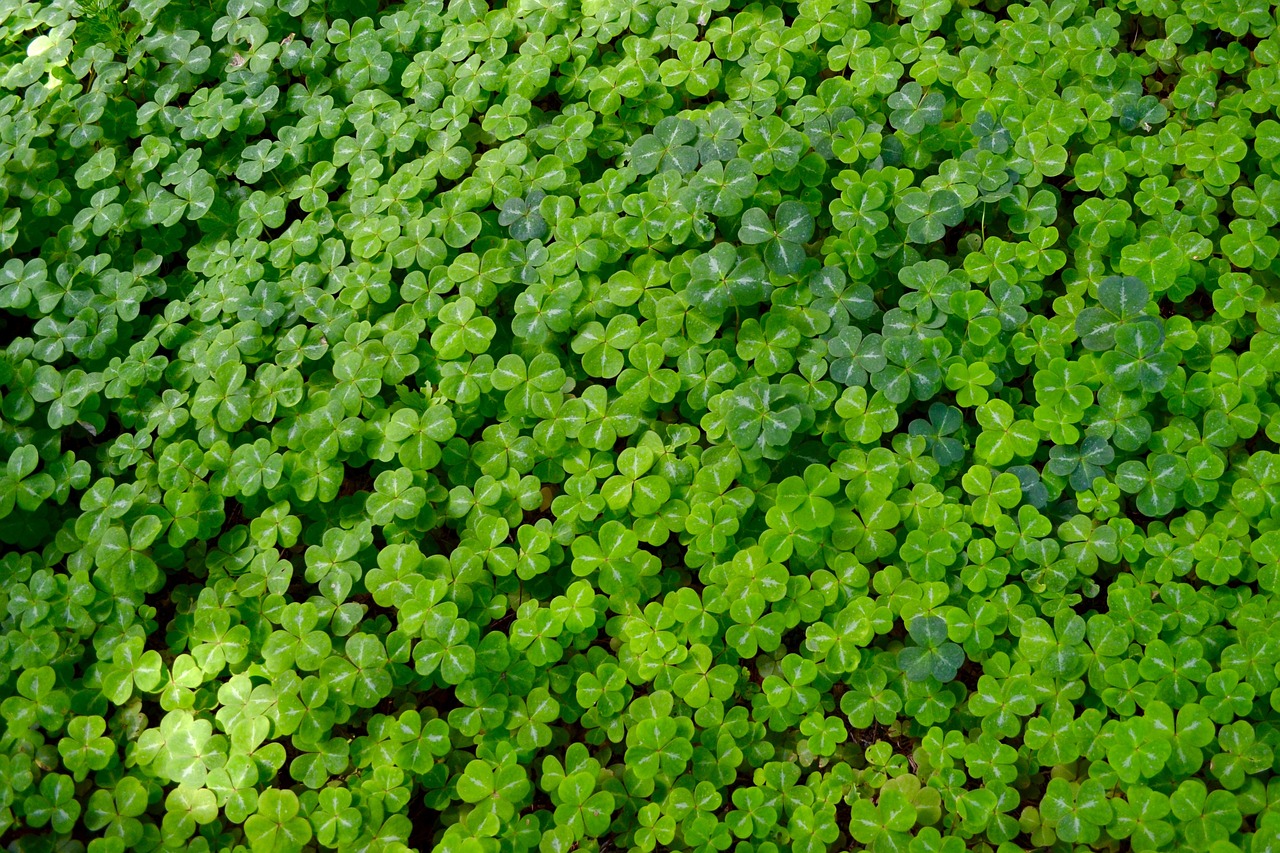
Organisateur
-
Catherine Villard
-
Email
catherine.villard@u-paris.fr
Autres organisateurs
-
Valérie Gautier
-
Email
valerie.gautier@u-paris.fr
-
Niccolò Mignemi
-
Email
niccolo.mignemi@cnrs.fr
Lieu

- Salle Luc Valentin, Condorcet
Prochaine occurence
- Aller à la Page
-
Date
- 25 Oct 2022
-
Heure
- 14h00 - 18h00
De nos conceptions de la vie découlent nos façons de « faire société ». Ce séminaire mettra en dialogue la réflexion de Thomas Heams sur la vie, au travers en particulier de la déconstruction de sa frontière originelle avec l’inerte, et celle d’Olivier Hamant sur la sous-optimalité du vivant, avec comme conséquence son extrême robustesse. Ces deux interventions questionneront en particulier la métaphore du vivant-machine et la notion de performance qui ont chacune à leur façon façonnée les sociétés occidentales et leurs avatars mondialisés.
Olivier Hamant (Biologiste interdisciplinaire, INRAE), La troisième voie du vivant.
Les marques de l’humanité sont omniprésentes sur Terre : l’âge des humains est surtout l’âge de la performance et du contrôle. En miroir, les multiples impacts sur notre milieu questionnent les valeurs de ce « progrès » et sa trajectoire. Alors que faire ? De nombreuses solutions du développement durable paraissent bien contreproductives. La perspective d’un ralentissement général ne mobilise pas non plus. En étudiant les systèmes vivants, nous pourrions apprendre une autre façon d’habiter la Terre. Alors que les sociétés humaines modernes ont mis l’accent sur l’efficacité et l’efficience au service du confort individuel, la vie se construit plutôt sur la fragilité, les fluctuations, l’incohérence… au service de la résilience du groupe. Cette « 3ème voie du vivant » pourrait éveiller un autre chemin dans l’Anthropocène.
Thomas Heams (Biologiste, AgroParisTech/INRAE), Le vivant sans frontières
La question de la frontière entre le vivant et le non vivant est un débat fondateur de la biologie. Mais paradoxalement, ce préalable n’est à ce jour pas clarifié, et les multiples manières de circonscrire le vivant nous en disent souvent plus sur nos habitudes, nos présupposés, sur l’air du temps qui les voit naître, que sur le vivant lui-même. Et trop souvent, le constat de l’impossibilité de définir le vivant, autrement que de manière très restrictive, semble s’imposer. Pourtant, il est possible de saisir cette question de sorte à lui trouver une réponse, en considérant les êtres vivants non pas comme une somme de petits systèmes machiniques, mais comme des entités qui entretiennent un rapport de tension dynamique entre ordre et désordre. Au terme de cette opération épistémologique, l’originalité du vivant apparaît sous un nouveau jour, elle n’est pas tant une somme de caractéristiques qu’une mise en mouvement adaptative de la matière qui autorise un spectre continu de possibles entre les vivants et les non-vivants. De fait, spéculatives ou documentées, des infravies existent et témoignent de cette approche graduelle, qui impose de renoncer à tout exceptionnalisme, sans renoncer à une vision matérialiste du vivant.
Débat final
Le nucléaire civil et la société

Organisateur
-
Catherine Villard
-
Email
catherine.villard@u-paris.fr
Autres organisateurs
-
Valérie Gautier
-
Email
valerie.gautier@u-paris.fr
-
Niccolò Mignemi
-
Email
niccolo.mignemi@cnrs.fr
Lieu

- Salle Luc Valentin, Condorcet
Prochaine occurence
- Aller à la Page
-
Date
- 27 Mar 2023
-
Heure
- 14h00 - 17h00
Les débats de société autour de la production d’électricité par l’énergie nucléaire combinent des aspects techniques et politiques, amenant les différents acteurs à déployer leurs stratégies propres. Comment se passe l’’intégration du nucléaire dans la société, et quelles évolutions sont prévisibles ?
Stefano Panebianco (physicien, CEA et CERN)
Nucléaire civil : l‘état du débat sur le plan technique
« D’un point de vue purement technique, le nucléaire de fission est une affaire pliée ! ». Cette phrase plutôt péremptoire, que j’ai employée en plusieurs occasions, résume discrètement l’état des connaissances scientifiques et techniques autour d’une technologie vieille de plus de 60 ans et qui, en France, a connu son principal déploiement à partir de la fin des années 1970. Cependant, comme toute affirmation rapide et synthétique, elle est imprécise car elle fait l’impasse sur les nombreux programmes de recherche autour de problèmes encore ouverts et, plus important encore, sur la nécessité d’inclure dans le débat des thématiques et analyses venant d’autres champs, en particulier les sciences humaines et sociales. Dans mon intervention je tâcherai de décrire une méthode d’organisation du débat autour du nucléaire inspirée de l’expérience que j’ai pu mener, en tant que coéditeur au sein de la revue Reflets de la Physique, lors de la publication d’un numéro spécial sur l’énergie nucléaire.
14h45 Françoise Lafaye (ethnologue, ENTPE)
Comprendre ce que disent certains comme ils le comprennent eux-mêmes. Malentendus autour de la campagne de distribution de comprimés d’iode aux abords de la centrale nucléaire du Blayais (Gironde)
Tout objet technique a de multiples dimensions. La recherche anthropologique que nous avons réalisée, avec Marc-Eric Gruénais (université de Bordeaux), sur la campagne de distribution des comprimés d’iode autour des centrales nucléaires (septembre 2019 – février 2021) concernait plus particulièrement le CNPE (Centre nucléaire de production d’énergie) du Blayais. La principale caractéristique de cette campagne est qu’elle était mise en œuvre sur un nouveau territoire, dont les acteurs n’avaient jusque-là pas été confrontés aux procédures nucléaires. Composante d’un plan plus vaste de sécurité, cette campagne a mobilisé, du national au local, tous les acteurs du nucléaire, mais aussi le personnel politique chargé de la sécurité des https://liedlab.net/wp-content/uploads/2018/11/vlcsnap-2018-11-06-13h55m16s037-1.pngistrés, les organisations relais des populations ciblées, etc. Au-delà des discussions sur l’intérêt d’une telle distribution, l’efficacité de cette mesure appliquée aux individus de tout âge, la possibilité effective de sa mise en œuvre, le statut de médicament des comprimés d’iode, cette campagne soulève des questions récurrentes en matière de nucléaire, principalement celle de l’information et de la manière dont elle est reçue par ses destinataires, remettant à plus tard l’idée de la nécessaire acquisition d’une culture du risque promue par les entrepreneurs du nucléaire.
16h Débat final animé par Christophe Goupil (physicien, LIED) et Maria Padovan (historienne, Università Roma Tor Vergata/Université Paris Cité, LIED)
La valeur de la terre

Organisateur
-
Petros Chatzimpiros
-
Email
petros.chatzimpiros@u-paris.fr
Lieu

- Salle Luc Valentin, Condorcet
Prochaine occurence
- Aller à la Page
-
Date
- 14 Avr 2023
-
Heure
- 14h00 - 17h00
Les sciences sociales ont longtemps regardé le foncier – notamment le foncier agricole – comme un aspect crucial à partir duquel penser l’organisation de la production, les mécanismes de partage de la richesse et les rapports de domination dans les espaces ruraux. La terre était alors une ressource dont les divers usages faisaient régulièrement l’objet de négociation et un patrimoine qui se transmettait d’une génération à l’autre. Ainsi, dans les sources et les enquêtes, elle apparaissait avant tout sous sa valeur économique et symbolique, même si les conditions de sa fertilité étaient bien connues par les contemporains qui savaient en lire les signes. Si les alertes n’ont pas manqué, au XXe siècle surtout, la terre s’est trouvée réduite à un simple support que l’agriculture industrielle imaginait pouvoir maîtriser, au moyen d’innovations techniques, chimiques et biologiques. Mis au second plan dans un monde qui promettait de s’émanciper des contraintes matérielles, la réflexion sur cette valeur revient aujourd’hui sur le devant de la scène portée par l’urgence de phénomènes tels l’accaparement foncier, l’artificialisation des paysages ou la dégradation des sols sous l’effet du changement climatique. Un regard interdisciplinaire est désormais nécessaire pour interroger la valeur des terres dans toute sa complexité aussi bien socio-économique que biologique.
Céline Pessis (historienne, AgroParisTech)
La vie des sols durant les « Trente Glorieuses » : savoirs, ignorance et mobilisations socio-environnementales
Comment la vie des sols fut-elle invisibilisée dans les savoirs et les pratiques agricoles au sortir de la Seconde Guerre mondiale ? Quels acteurs, quelles disciplines scientifiques, quelles politiques tentèrent de lutter contre cet oubli de la dimension organique et vivante des sols ? Cette intervention propose un cheminement historique aux côtés des microbiologistes, des agriculteurs, des médecins, protecteurs de la nature, hygiénistes, voire aménageurs, qui s’élevèrent pour la protection et la reconnaissance de la vie des sols durant la période des dites « Trente Glorieuses ». À travers l’étude des difficultés rencontrées, de la marginalisation de ces acteurs et de leurs savoirs, elle entend alimenter une réflexion sur la faiblesse de notre outillage conceptuel et pratique actuel.
Battle Karimi (biologiste, Novasol Experts)
L’écologie microbienne des sols, de la production de connaissances au diagnostic opérationnel de la qualité des sols
Les sols constituent la 3ème frontière biotique. Ils abritent environ 15 tonnes d’organismes vivants à l’hectare dont 1/3 sont des microorganismes. Malgré l’implication centrale de ce patrimoine biologique dans le fonctionnement des sols et les services écosystémiques qui en découlent, il souffrait d’un manque important de connaissances jusque dans les années 2000. A cette période, la mise en place d’un programme de suivi de la qualité des sols de France – le Réseau de Mesures de la Qualité des Sols – et le développement des méthodes de biologie moléculaire ont permis d’intensifier les recherches sur les microorganismes du sol à grande échelle. De nombreuses connaissances sur l’écologie des microorganismes du sol ont alors été produites telles que leur distribution spatiale, les facteurs qui déterminent ces distributions et la hiérarchie des filtres environnementaux. L’ensemble de ces connaissances ont permis de produire un atlas français des bactéries du sol, ouvrage naturaliste à destination du grand public. Elles ont également permis de construire des bioindicateurs de la qualité écologique des sols et des référentiels nationaux d’interprétation qui sont désormais déployés et utilisés au terrain pour évaluer l’impact des usages et des pratiques de gestion des sols. Ces outils de diagnostic opérationnel constituent une innovation mobilisée pour apprécier la durabilité environnementale des activités humaines.
Adrien Baysse-Lainé (géographe, CNRS, UMR5194 – PACTE)
Qualité des sols et réglementation foncière agricole en France
Depuis une décennie, la concentration foncière a été réinscrite à l’agenda social et politique français, notamment à l’occasion d’appropriations massives de terres par des acteurs non-agricoles. L’horizon d’une réforme foncière nationale anime de nombreuses organisations des secteurs agricole, juridique, de l’environnement et de l’action publique. À l’inverse de ce qu’ont promu deux principaux réseaux d’acteurs proches de la gauche paysanne, les débats et réalisations se sont jusqu’à présent développés en séparant les enjeux de partage du foncier (contrôle des marchés, mise à jour du bail rural, fiscalité) et de protection fonctionnelle des sols (artificialisation). Toutefois, à une échelle plus locale, mais de façon relativement silencieuse, une réglementation foncière (encadrement des fermages) établit depuis des décennies une corrélation entre qualité des sols et valeur de la terre, selon des modalités spatialement très variables qui révèlent des conceptions situées du foncier agricole.
Débat final animé par Roselyne Ferrari (biologiste, LIED, Université Paris Cité) et Niccolò Mignemi (historien, CNRS, LIED)
Ville d’avenir : Les plantes actrices des interstices
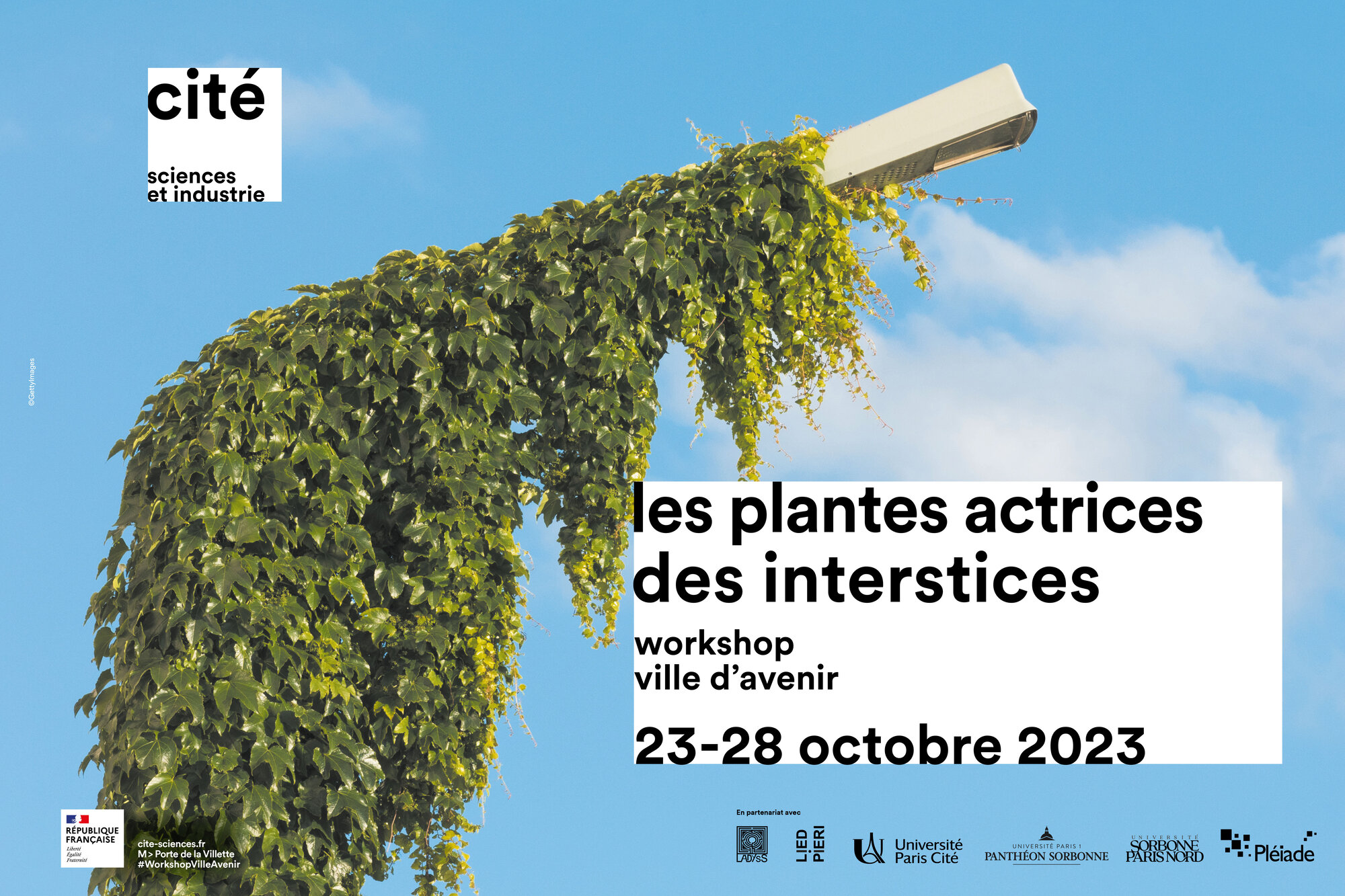
Organisateur
-
François Bouteau
-
Email
francois.bouteau@u-paris.fr
Plus d'Infos
Prochaine occurence
- Aller à la Page
-
Date
- 23 - 28 Oct 2023
-
Heure
- 8h00 - 18h00
La Cité des sciences et de l’industrie, l’Université Paris Cité et les laboratoires LIED et LADYSS organisent un atelier s’adressant aux étudiant·es, professionnel·les et tous publics sur les plantes actrices de la ville de demain qui se tiendra du 4 au dimanche 9 juillet 2023.
Proposition : il s’agit de considérer les plantes comme étant des composantes de la ville à part entière et non comme un simple objet urbain. Par leurs sensibilités, elles interagissent avec l’environnement. Elles sont de véritables actrices de l’écosystème urbain. Elles jouent sur la qualité des milieux, structurent les paysages, agissent sur le climat et le bien être des vivants. De fait, elles font autant à la ville que la ville leur fait. L’objectif est de poursuivre les projets sur la “Ville d’avenir” de la Cité des sciences et de l’industrie en réfléchissant aux plantes qui s’adaptent aux contraintes exercées par la ville dans les espaces interstitiels des abords du musée.
3 axes de réflexion :
– La sensibilité des plantes à leurs environnements
– Les relations et interactions entre les plantes et les citadines et citadins
– La place des espaces interstitiels dans la trame verte
Organisation : l’atelier réunit une vingtaine de participant·es travaillant en équipe, formée par les organisateurs·trices de maximum 5 personnes.
L’âge minimum pour participer est de 20 ans. Il se déroule à la Cité des sciences et de l’industrie, en salle de travail ou sur les espaces extérieurs directement concernés par les réflexions. Les encadrant·es : les partenaires seront présent·es pour l’encadrement et ainsi que l’équipe projet d’Universcience. Ils vous accompagneront lors de ces journées de réflexion collaborative, entre participant·es, favorisant l’échange et le partage de savoirs/connaissances.
Université Paris-Cité : Delphine Bonnin, François Bouteau, Céline Clauzel, Etienne Grésillon, Patrick Laurenti, Lucia Sylvain- Bonfanti
Université d’Artois : Fabien Roussel
Équipe Workshop d’Universcience : Patricia Pizzorno Sardena, Coline Sauvaget
Usages et partages de l’eau

Organisateur
-
Catherine Villard
-
Email
catherine.villard@u-paris.fr
Autres organisateurs
-
Niccolò Mignemi
-
Email
niccolo.mignemi@cnrs.fr
-
Valérie Gautier
-
Email
valerie.gautier@u-paris.fr
Lieu

- Salle Luc Valentin, Condorcet
Prochaine occurence
- Aller à la Page
-
Date
- 31 Oct 2023
-
Heure
- 14h00 - 17h00
Les tensions internationales sur la ressource en eau peuvent se renforcer avec les changements climatiques. Comment les acteurs s’adaptent-ils, de l’échelle des foyers ou des régions, jusqu’à l’échelle internationale ? Que faire pour concilier les demandes contradictoires des individus, de l’agriculture, des industries et de la protection de l’environnement ?
Agnès Ducharne (hydrologue, CNRS, UMR 7619 METIS, Paris)
L’eau et ses usages : les contraintes nouvelles imposées par le changement climatique en France
L’Anthropocène oblige à penser les ressources en eau dynamiquement, comme la résultante d’une offre liée au cycle de l’eau et d’une demande anthropique. Pour étayer ce point de vue, je présenterai d’abord les impacts du changement climatique sur les ressources en eau (global et France), en précisant les méthodes mises en œuvre (modélisation climatique et déclinaisons). J’aborderai ensuite la dépendance des ressources en eau aux usages et prélèvements, eux même soumis à la disponibilité en eau, et les conséquences en terme d’adaptation. Je m’appuierai notamment sur le cas du Marais Poitevin, qui subit une baisse des ressources en eau à cause des pompages agricoles depuis plusieurs décennies, ce qui a amené les irrigants locaux à imaginer la solution des retenues de substitution ou mégabassines.
Chloé Nicolas-Artero (géographe, Politecnico di Milano)
Politiques publiques de production d’eaux non conventionnelles dans le pourtour méditerranéen
Le terme d’eaux non conventionnelles renvoie à la mobilisation de technologies alternatives pour utiliser des ressources non exploitées (ex : eau de mer) ou pour améliorer l’utilisation d’eaux conventionnelles (ex : recharge de nappes). Ces « eaux nouvelles » sont souvent présentées par les organisations internationales et les États comme une solution, souvent peu contestée, pour augmenter les disponibilités en eau dans les régions arides et semi-arides. Depuis les sustainability transition studies, nous proposons d’interroger les transitions hydriques engagées par cinq pays (Espagne, Italie, Égypte, Tunisie et Algérie) et ce, dans une approche dite Nord/Sud. Après avoir relativisé l’ampleur de ces transitions, nous comparerons successivement les barrières à la production des eaux dessalées (de mer et saumâtres), des eaux traitées et de la collecte des eaux de pluie ainsi que leurs effets spatiaux dans chacun des pays. Il s’agira ainsi de dessiner les premiers contours d’une géographie politique des eaux non conventionnelles comme stratégie d’adaptation face au réchauffement climatique dans le pourtour méditerranéen.
Débat final animé par Roselyne Ferrari (biologiste, LIED, Université Paris Cité) et Héloïse Nez (sociologue, LIED, Université Paris Cité)
Points de bascule liés au climat

Organisateur
-
Catherine Villard
-
Email
catherine.villard@u-paris.fr
Autres organisateurs
-
Niccolò Mignemi
-
Email
niccolo.mignemi@cnrs.fr
-
Valérie Gautier
-
Email
valerie.gautier@u-paris.fr
Lieu

- Salle Luc Valentin, Condorcet
Prochaine occurence
- Aller à la Page
-
Date
- 06 Juin 2024
-
Heure
- 14h00 - 17h00
Le point de bascule identifie un seuil au-delà duquel une modification à l’apparence minuscule peut amplifier ses conséquences et entraîner des changements en cascade. Mais comment l’identifier, en mesurer la portée et éventuellement anticiper son impact ? L’urgence de la crise climatique et les évènements extrêmes qui touchent désormais l’ensemble du globe nous encouragent à réinterroger cette notion. Pour nous aider, un historien du monde romain antique et une biologiste spécialiste de la biodiversité nous présenteront leurs approches, menées aux confins de leurs domaines disciplinaires.
14h00 Kyle Harper (historien, University of Oklahoma, Chaire 2023-2024 Avenir Commun Durable du Collège de France), Climate change and social collapse in history (and future?)
14h45 Tatiana Giraud (biologiste, CNRS, Université Paris-Saclay, Académie des sciences), Effondrement de la biodiversité : quelles conséquences pour les sociétés humaines ?
15h30 Pause
16h00 Débat final animé par Mathieu Arnoux (historien, LIED, Université Paris Cité/EHESS) et José Halloy (physicien, Université Paris Cité, LIED)
Victor Marquez Alavarez

Organisateur
-
Eric Herbert
-
Email
eric.herbert@u-paris.fr
Lieu
- Salle café 633B
Prochaine occurence
- Aller à la Page
-
Date
- 09 Juil 2024
-
Heure
- 13h00 - 14h00
Intervenant : Victor Marquez Alavarez
« A Net Energy Analysis of combined electricity and biofuel supply from
photovoltaics and microalgae. »
Sadi Carnot’s Legacy
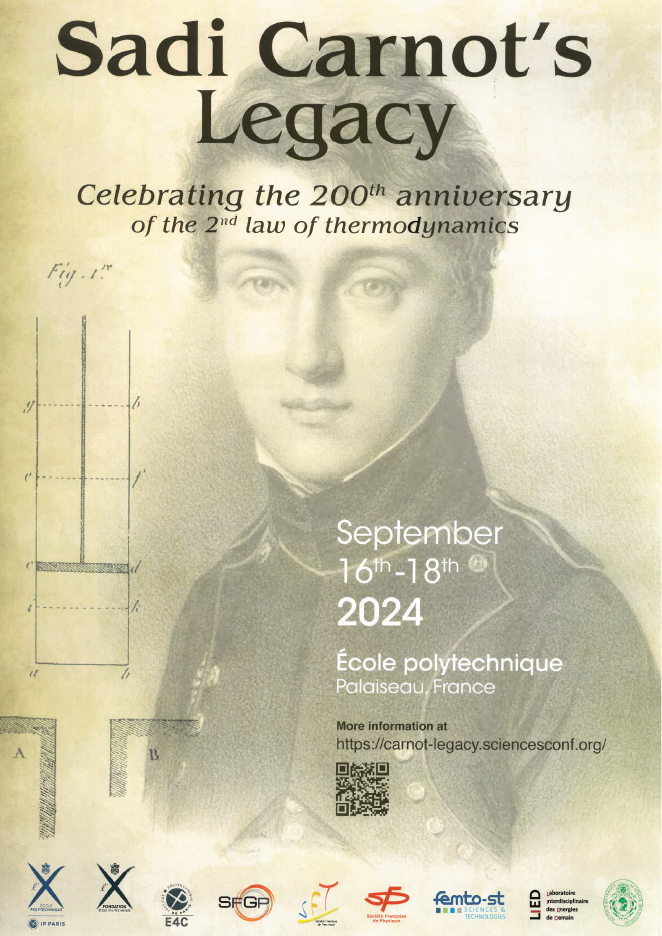
Prochaine occurence
- Aller à la Page
-
Date
- 16 - 18 Sep 2024
-
Heure
- 8h00 - 18h00
A l’occasion du bicentenaire de la publication du mémoire de Sadi Carnot le LIED s’est associé à la réalisation du colloque Sadi Carnot’s Legacy. Ce colloque s’est déroulé dans les locaux de l’Ecole Polytechnique et a réuni une large communauté thématique autour des questions actuelles de la Thermodynamique. Lors de le soirée de gala un hommage musical a été rendu à Lazare Carnot, père de Sadi.
En effet, à la naissance de son fils en 1796, Lazare Carnot le prénomme Sadi, en hommage au poète persan Saadi, dont il est un grand admirateur. Poète à ses heures, Lazare publie également, aidé par son ami Prieur de la Côte-d’Or qui compose pour lui.
Figures emblématiques de la Révolution française, ils collaborent étroitement au sein du Comité de salut public. Carnot, surnommé « l’Organisateur de la Victoire », a apporté une contribution importante à la stratégie militaire, tandis que Prieur de la Côte-d’Or, également membre du Comité, s’est concentré sur les questions industrielles et la mobilisation des ressources. Les deux hommes sont restés proches tout au long de leur vie, même pendant l’exil que leur imposa le retour de la monarchie.
Prieur de la Côte d’Or a d’abord composé pour un ensemble piano-chant. Mais le fonds Prieur de la Côte d’Or, conservé aux archives de l’Ecole Polytechnique, a récemment révélé l’existence d’une version pour quatuor de cette œuvre. C’est cette version qui a été jouée pour la première fois lors du dîner de gala.
Les musiciennes:
Amélie Alu, chant
Beata Halska-Lemonnier et Millie Floutier : violons
Noémie Airiau-Gauguier : alto
Marina Nguyen The : violoncelle
Ville d’avenir : Les invisibles dans les jardins
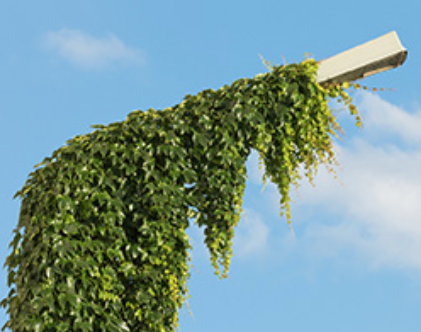
Organisateur
-
François Bouteau
-
Email
francois.bouteau@u-paris.fr
Autres organisateurs
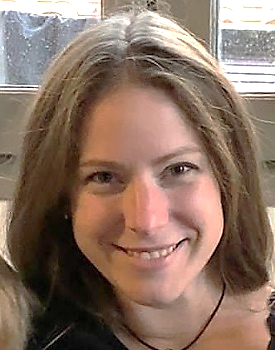
-
Delphine Bonnin
-
Email
delphine.bonnin@u-paris.fr
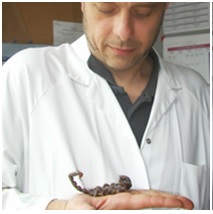
-
Patrick Laurenti
-
Email
patrick.laurenti@u-paris.fr
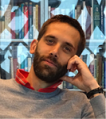
-
Etienne Grésillon
-
Email
etienne.gresillon@u-paris.fr
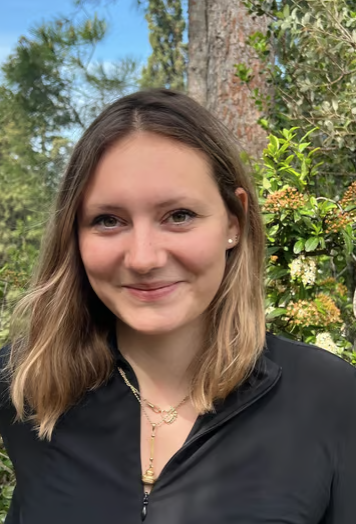
-
Lucia Sylvain-Bonfanti
-
Email
luciasylvain@hotmail.fr
Lieu
- Cité des sciences et de l'industrie
- 30 avenue Corentin Cariou 75019 Paris
Prochaine occurence
- Aller à la Page
-
Date
- 04 - 09 Nov 2024
-
Heure
- 8h00 - 18h00
Dans la continuité des workshops «Ville d’avenir» et dans le cadre d’une prochaine exposition sur la thématique du jardin, la Cité des sciences et de l’industrie propose un workshop en deux volets : la saison 2024 s’intéresse spécifiquement à «Les invisibles dans les jardins» et la saison 2025 portera son attention sur «Jardiner avec l’invisible».
L’objectif est de mettre en évidence ce qui ne se voit pas dans les jardins mais qui est pourtant fondamental. D’un point de vue biologique, l’ensemble des processus liés à la vie des plantes, les mouvements lents, la communication par les odeurs, la sensibilité au son, les interactions symbiotiques ne sont pas accessibles aux sens humains mais pourtant ils sont constitutifs du jardin. D’un point de vue sociétal, les modes, les découvertes horticoles, les classes sociales délimitent des paysages spécifiques, d’un point de vue culturel, le jardin est associé à des représentations profanes et sacrées associant l’ici-bas et l’au-delà.
Les axes de réflexion :
● La sensibilité, les communications et les mouvements des plantes,
● Les relations et interactions symbiotiques,
● Les modes, découvertes, les représentations qui font les jardins.
Cet atelier contribuera aux réflexions environnementales, sociétales telles que l’adaptation aux transitions écologiques, économiques et représentations sacrées et pratiques culturelles. Il se déroulera du lundi 4 novembre au samedi 9 novembre 2024 de 9h à 18h à la Cité des sciences et de l’industrie.
Programme :
● Travail en équipe,
● Présentation des travaux en cours de réflexion,
● Restitutions des travaux par les participants du worskhop,
● Rencontre avec des chercheurs.
Organisation :
Le workshop réunit des participants travaillant en équipe de maximum 5 personnes, formée par les organisateurs. L’âge minimum pour participer est de 20 ans. Il se déroule à la Cité des sciences et de l’industrie, en salle de travail ou sur les espaces extérieurs directement concernés par les réflexions.
Organisateurs :
● Université Paris-Cité : Delphine Bonnin, François Bouteau, Etienne Grésillon, Patrick Laurenti, Lucia Sylvain-Bonfanti, Denis Chartier, Clément Gros,
● Université Sorbonne Nord : Fabien Roussel
● Université Panthéon-Sorbonne : Céline Clauzel
● Universcience : Patricia Pizzorno Sardena.

